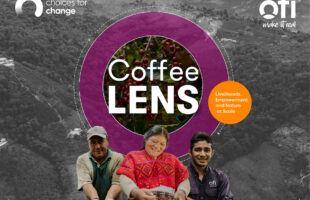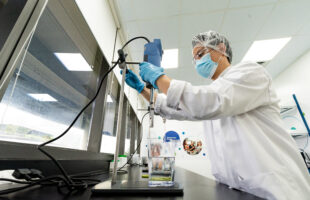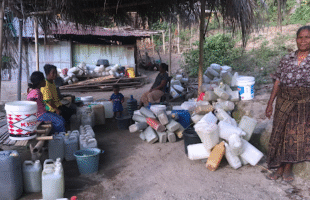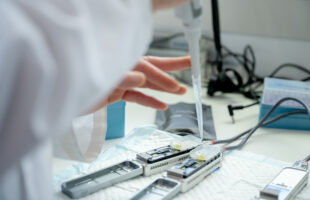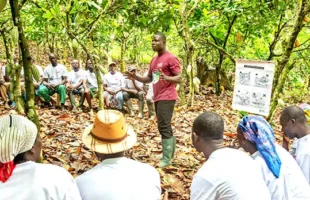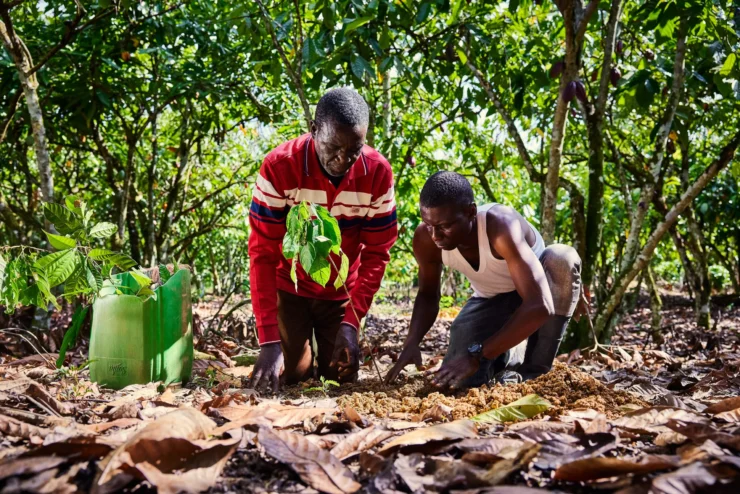
Courtesy of ofi
By Cath Isabedra
Behind the well-stocked shelves and seemingly seamless supply chains, the global food system is facing a quiet crisis. In 2024, food recalls surged dramatically, largely due to preventable bacterial contamination. It’s no longer surprising that consumers are asking harder questions, regulators are tightening their grip, and companies are waking up to the reality that the status quo is no longer good enough.
The real question isn’t whether food safety can be improved — it’s whether the industry is willing to rebuild it from the ground up.
Joan O’Shea, Senior Vice President and Global Head for Quality & Food Safety at ofi, is one of the few industry leaders openly confronting that challenge — and the systemic rethink it requires.
“The reality is that the industry cannot rely solely on testing our way out of trouble,” she shares.
That sentence lands hard for a reason. Testing — often seen as the gold standard — is no longer sufficient. And O’Shea believes the future of food safety lies not just in labs, but in people, processes, and radical transparency.
Why clean data alone won’t keep food clean
Testing can catch pathogens, but it doesn’t always prevent them. What’s needed, says O’Shea, is a layered defense system — one that starts long before products ever reach a lab.
“ofi is focused on designing the right processes and controls to minimize the risk of cross contamination or failure to adequately kill pathogens in products.”
Across cocoa, dairy, nuts, spices, and coffee, stringent protocols are enforced. All sites handling ready-to-eat food are GFSI-certified, with ongoing data monitoring and mandatory validation of all kill steps.
Yet the real differentiator? Culture.
“Our greatest asset is our people… We have a shared passion for building the ofi Food Safety Culture,” she emphasizes.
Their grassroots “SISISI” approach — See it, Say it, Sort it — pushes food safety beyond policy into daily, frontline behavior. Teams check everything from water control to overhead maintenance and present findings to plant leadership daily. Errors are fixed. Wins are celebrated. If you think about having a culture of safety, it’s important to highlight that ownership is local. But the impact is global.
Food safety begins before the first mile
While many food safety breakdowns happen during processing, the root of the problem often lies upstream — in the raw ingredients that enter the system.
“As a baseline, all ingredients must undergo risk assessments.” To avoid contamination from the start, high-risk ingredients are flagged, held, and tested on arrival. Supplier history, origin, and risk classification are digitally tracked. If needed, audits are triggered, and corrective actions are logged and monitored in real-time.
“We are very clear on our expectations with suppliers of high-risk ingredients. If they have issues on site, they need to escalate, and we will work with them to address them.”
She adds, “The integrity of any high-risk ingredient supplied to ofi is critical. We have developed a fantastic digital platform for vendor management that facilitates two-way communication with our suppliers. Within this system, we have the ofi Supplier Expectations manual which clearly calls out requirements for our partners.”
That clarity — and collaboration — helps close the gap between compliance and safety.
Trust is built in a crisis
No matter how strong your safeguards are, issues can arise. And when they do, trust is either eroded or earned.
“The welfare of consumers and customers comes first. ‘We do no Harm’ is a great mantra my boss, Chief Innovation & Quality Officer, Kamesh Ellajosyula and I use as the litmus test of every decision.”
For O’Shea, speed and transparency are non-negotiable. Escalation pathways are trained into every level of the organization. Incident Management Teams — supported by data, science, and real-time root cause analysis — are on standby globally.
“We remain open and transparent to ensure we maintain that trust with our customers and regulatory bodies.”
The approach isn’t simply damage control but damage prevention.
Digitizing the invisible
Food safety used to be reactive. Now, it’s becoming predictive — and that shift hinges on technology. From AI and blockchain to traceability platforms and IoT-enabled monitoring, the food system is being reengineered one data point at a time.
“Digitization starts on farms where we source from approximately 2.4 million farmers… sometimes across remote and inaccessible areas.”
Through tools like ofi Direct, OFIS, Track & Trace, and AtSource, the company is connecting the first mile to the last. Every cocoa pod, coffee cherry, or cashew can be traced back to its source — and its impact.
“With a clearer view of what is happening on the ground… we can plan development programs that are better suited to farmers’ needs.”
When climate change becomes a food safety issue
Drought. Floods. Heatwaves. Each of these not only affects yield but introduces new risks for contaminants and spoilage. That means sustainability and food safety can no longer be siloed.
“At ofi, we have a legacy of making real change in food systems… and are taking action through our Choices for Change sustainability strategy at the farm-gate.”
That includes encouraging climate-smart agriculture and ensuring upcycled ingredients — like cascara from coffee cherries — meet the same rigorous food safety standards.
“This upcycling process means we can bring valuable nutrients back into the food supply… and offer soluble cascara powder that’s traceable and certified.”
In an industry trying to cut food waste, every scrap must be safe.
Food safety isn’t global — yet
One of the most frustrating realities for food safety professionals is regulatory inconsistency. Some countries enforce strict standards; others lag far behind.
“Currently regulators are testing at the end of the line rather than prevention at the beginning.”
O’Shea argues for a unified approach to chemical and pesticide management — and a preventive framework rooted in science, not politics. Her vision? A future where non-invasive, green technology could eliminate hazards without compromising food’s natural integrity.
“We can dream big and be the change for a better, healthier future.”
But it won’t happen in silos. It requires collaboration between governments, academia, and industry.
What’s next: Food safety at the speed of innovation
In the next five years, the industry’s food safety challenges will intensify. But so will its tools — from AI-led risk prediction to fully integrated Supply Chain 4.0 environments.
“We are building the capabilities of our teams. We need to be future ready and ensure our people are all equipped to manage and address any potential issues proactively.”
That’s what real leadership looks like in food safety today: not perfection, but preparation. Not fear of crisis, but readiness to act — and to adapt.
And most importantly, not waiting for regulations to catch up before doing the right thing.
With insights from Joan O’Shea, Senior Vice President and Global Head for Quality & Food Safety at ofi. With a career that spans more than two decades, Joan has led transformative programs in supplier engagement, crisis management, and digital food safety systems.


